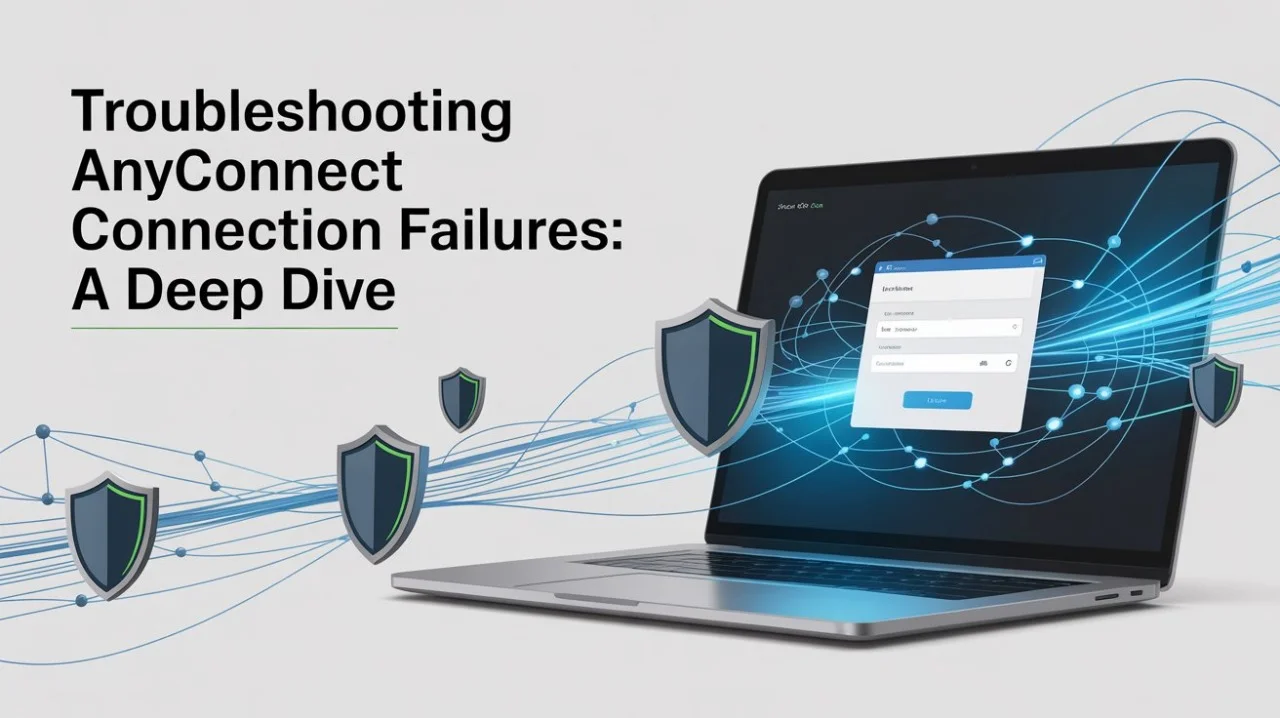Cisco AnyConnect Secure Mobility Client has emerged as a cornerstone for secure remote access in today’s hybrid work environments. It enables encrypted VPN connections, allowing users to safely access corporate resources from virtually any location while maintaining data integrity and compliance. Despite its reliability, connection failures remain a frequent challenge for network administrators and engineers responsible for VPN deployment and maintenance.
For professionals who want to pursue Cisco VPN Training, developing strong troubleshooting skills in AnyConnect environments is essential. Understanding common issues, analyzing underlying causes, and applying systematic resolutions not only ensures uninterrupted network access but also prepares candidates for certification exams and real-world enterprise deployments.
Understanding Cisco AnyConnect and Its Core Components
Cisco AnyConnect operates on a client-server architecture, establishing a secure tunnel between remote endpoints and the corporate network. It integrates with Cisco ASA and Firepower Threat Defense (FTD) devices, providing secure access through SSL or IPsec IKEv2 protocols. AnyConnect also leverages features like posture assessment, DAP (Dynamic Access Policies), and endpoint compliance—all of which must align correctly to ensure smooth connectivity.
When connection failures occur, they often stem from misconfigurations, certificate mismatches, routing inconsistencies, or software conflicts. Identifying the root cause requires a structured, methodical approach—something every network professional should master.
Common Categories of AnyConnect Connection Failures
Troubleshooting AnyConnect issues starts with understanding where failures occur in the VPN establishment process. Typically, issues fall under five major categories:
| Failure Type | Typical Cause | Resolution Approach |
| Authentication Failures | Incorrect credentials, AAA misconfigurations, or expired certificates | Verify AAA server reachability and certificate validity |
| Tunnel Establishment Errors | IPsec/SSL negotiation failure or NAT-T issues | Check phase negotiation and inspect firewall/NAT behavior |
| Posture/Policy Rejections | Non-compliant endpoint or DAP violation | Review posture module configuration and endpoint security compliance |
| DNS/Reachability Issues | Split-tunneling misconfiguration or missing DNS routes | Confirm split-tunnel lists and internal DNS resolution |
| Software or Driver Conflicts | Outdated AnyConnect client or incompatible OS version | Update client software and check driver dependencies |
Each of these categories demands a unique diagnostic lens, and understanding them holistically ensures a faster mean time to repair (MTTR) in real-world environments.
Step-by-Step Diagnostic Framework
When troubleshooting AnyConnect failures, engineers should adopt a layered diagnostic framework rather than trial-and-error. Here’s how professionals should structure the investigation:
- Start with User Reports:
Document the symptoms — error messages, OS details, and timestamps. For example, “Login failed” differs vastly from “Connection attempt failed.” - Check the VPN Client Logs:
AnyConnect logs (found under C:\ProgramData\Cisco\Cisco AnyConnect Secure Mobility Client\Logs) reveal negotiation details, certificate errors, and connection attempts.
Use keywords like “SSL handshake,” “IKEv2,” or “authentication failure” to narrow the scope. - Validate Server Configuration (ASA/FTD):
Ensure the ASA has valid certificates, the correct trustpoint association, and matching tunnel-group configurations. Also verify group policies for address pools, DNS servers, and split-tunneling lists. - Monitor Real-Time VPN Sessions:
On the ASA, commands like show vpn-sessiondb anyconnect (read-only) provide live insight into connected users, session types, and encryption protocols.
Look for abnormal session counts or repeated connection resets. - Examine Network Reachability and NAT Behavior:
Connectivity failures may arise from asymmetric routing or double NAT scenarios, especially when users connect from behind third-party firewalls. - Check for OS or Security Software Conflicts:
Endpoint antivirus or local firewalls can block the VPN adapter’s tunnel creation. Ensuring exceptions for AnyConnect processes often resolves these hidden conflicts.
Advanced Troubleshooting Insights
Beyond standard diagnostics, advanced engineers also examine deeper layers of AnyConnect functionality:
- DTLS vs. TLS Fallback:
If UDP (DTLS) is blocked, AnyConnect falls back to TCP (TLS). Persistent fallback indicates firewall port issues or packet inspection interference. - Certificate Validation Failures:
Misaligned certificate chains or expired CA roots can silently block connections. Always verify certificate trust chains and CRL (Certificate Revocation List) accessibility. - Split-Tunneling & DNS Resolution:
Misconfigured split-tunnel ACLs can prevent internal domain resolution. Validating the DNS server mapping and suffix search list ensures name resolution integrity. - Posture and DAP Failures:
Integration with ISE (Identity Services Engine) may reject clients based on posture non-compliance. Review ISE live logs for corresponding policy hits.
Best Practices for Reliable AnyConnect Deployments
- Regularly Update the AnyConnect Client and ASA Firmware.
Compatibility gaps between client and server versions are a major source of unexpected disconnections. - Use Centralized Logging and Monitoring.
Integrate syslogs with a SIEM tool for centralized visibility. Alerts on failed VPN attempts help identify trends and prevent widespread outages. - Implement Redundancy and High Availability.
Configure failover between ASA peers or FTD clusters to maintain continuous VPN service during outages. - Educate Users and Provide Clear Error Guidance.
Many connection failures stem from end-user confusion. Clear documentation and training minimize repetitive support tickets.
Conclusion
Mastering AnyConnect troubleshooting requires both theoretical understanding and real-world practice. From dissecting authentication flows to analyzing certificate trust chains, a deep diagnostic approach ensures faster recovery and enhanced VPN reliability. Network engineers who invest time in structured troubleshooting methodologies not only resolve issues effectively but also build credibility as trusted infrastructure professionals.
For those aiming to refine their expertise, enrolling in a Cisco VPN Course provides hands-on exposure to VPN architecture, configuration nuances, and enterprise-grade troubleshooting labs — a must-have skillset in modern secure networking.









